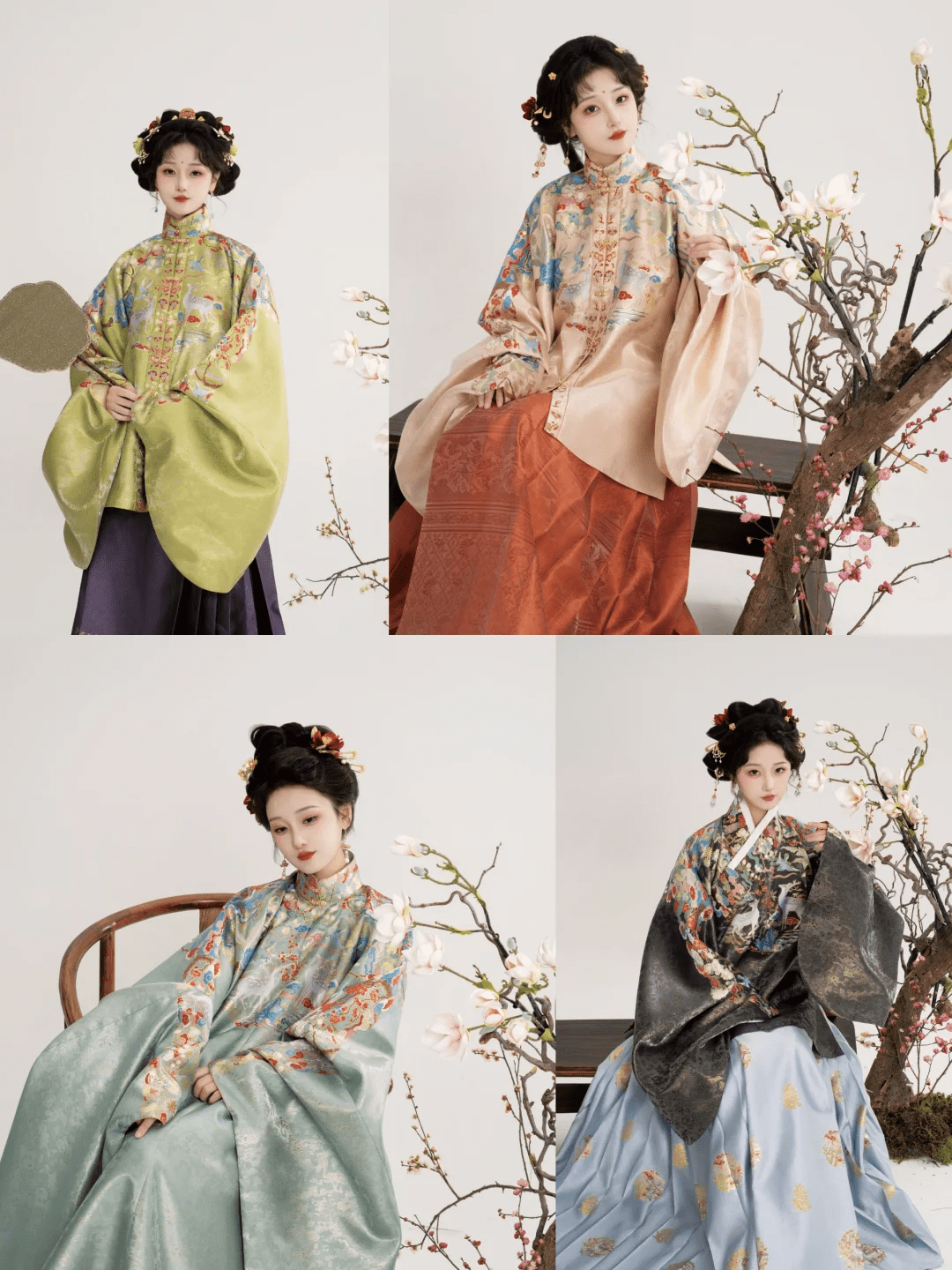Within the Hanfu system, Ming dynasty attire is often hailed as the epitome of “formal dress and proper etiquette.” Its reputation stems not only from its strict structure and clearly defined ceremonial rules but also from its integration of the essence of earlier dynastic styles. Ming clothing represents a high point in Chinese dress history, blending classical charm with practical spirit. From the long, wide-sleeved robes of scholars, to the ceremonial regalia of the imperial family, to the everyday clothing of commoners, Ming dynasty garments are marked by their symmetry, solemnity, structured form, and ornate beauty—perfectly reflecting the Confucian aesthetic. This article delves into the structural features, aesthetic styles, and cultural symbolism behind Ming dynasty clothing.
1. Clear Hierarchy: The “Regulated Dress System” under Strict Social Stratification
The Ming dynasty marked a revival of traditional ritual systems in China. In terms of clothing, it inherited Confucian values from the Tang and Song dynasties while consciously correcting the Mongol (Yuan) influence of foreign attire.
1.1 Official Attire System
Ming officials’ attire included round-collar robes, black gauze hats, belts, and official boots. The most iconic was the “Buzi” robe—a square embroidered patch sewn on the front and back of the robe to denote rank:
Civil officials wore bird motifs (e.g., cranes, golden pheasants);
Military officials wore beasts (e.g., lions, tigers, leopards);
The higher the rank, the rarer the animal and the more elaborate the embroidery.
Special robes such as the “Flying Fish Robe” and “Python Robe” were bestowed by the emperor as a symbol of honor and privilege.

1.2 Regulated Civilian Dress
Though civilians did not wear Buzi, there were still clothing regulations: no dragon motifs, no coronation wear, and no cross-dressing. Despite restrictions, civilian clothing remained refined and elegant, embodying Confucian taste.

Chinese dress culture:Hanfu revival,Ming Dynasty clothing
2. Structured Design: Symmetry and Strict Order
Ming clothing emphasized the philosophical ideal of “harmony between heaven, earth, and humanity.” Garment patterns favored straight lines and symmetrical forms, reflecting the balance of yin and yang and the cosmic order.
2.1 Round-Collar Robes
These were among the most representative garments of the Ming dynasty, characterized by:
Seamless round collars and symmetrical front openings;
Straight or slightly tapered silhouettes with wide sleeves;
Waist secured with silk or leather belts;
Often worn in white with black belts to convey scholarly grace.
Round-collar robes were worn by intellectuals and used in weddings, festivals, and religious ceremonies.
2.2 Standing-Collar, Front-Opening Garments (Bijia / Zhishen)
Used in daily life, these offered both aesthetics and functionality:
Bijia: sleeveless vests reaching the knees, worn by both genders;
Zhishen: wide-hemmed, front-opening robes ideal for everyday wear.
These styles remain popular in modern Hanfu reproductions.
3. Fabrics and Colors: Subtle Elegance and Luxurious Detail
Ming textile craftsmanship reached an unprecedented level, with fine materials like Yunjin brocade from Nanjing, Song brocade from Suzhou, and Kesi silk tapestry from Fujian—all masterpieces of art and culture.
3.1 Quality Fabrics
Common materials included:
Brocade, gauze, silk, satin, and damask;
Luxurious brocades for formal events like weddings and ceremonies;
Light, plain weaves for daily wear;
Cotton and linen for the humble classes, emphasizing simplicity.
3.2 Color Aesthetics
Colors in Ming clothing ranged from imperial gold, crimson, and purple, to folk favorites like jade green, muted blues, and soft grays—reflecting the Eastern ideal of “gentle elegance.”
Women’s attire often featured gentle tones like china blue, lilac purple, and lotus pink—delicate yet refined, elegant without being gaudy.
4. Accessories That Make the Look: Headdresses, Waist Adornments, and Ritual Symbolism
4.1 Men’s Accessories
Black gauze hats: iconic of Confucian scholars;
Leather/silk belts: used to fasten robes, often decorated with jade pendants or sachets;
Fans: either paper or feather, both ornamental and practical.
4.2 Women’s Accessories
Headdresses: floral pins, dangling ornaments, and phoenix hairpins, all intricately designed;
Earrings: commonly made from jade, gold, or silver, adding a delicate touch to the face;
Fragrance sachets, embroidered handkerchiefs, pendants: functional items that also expressed a woman’s emotions or status.
Accessories were not merely decorative—they conveyed social status, etiquette, gender roles, and aesthetic sensibilities, forming a vital part of Ming clothing culture.
5. A Legacy Reborn: Timeless Beauty in Modern Times
With the recent rise of the Hanfu movement, Ming-style attire has gained immense popularity among young Chinese. Its upright structure and dignified elegance resonate with contemporary tastes. Whether in faithful reproductions or modern adaptations, Ming Hanfu stands as a testament to the aesthetic ideals of “The Nation of Rites and Etiquette.”
Today, from traditional weddings to ancestor worship, cultural markets to cosplay photoshoots, more and more people are donning Ming-style Hanfu—experiencing firsthand the enduring grace of China’s sartorial heritage.

